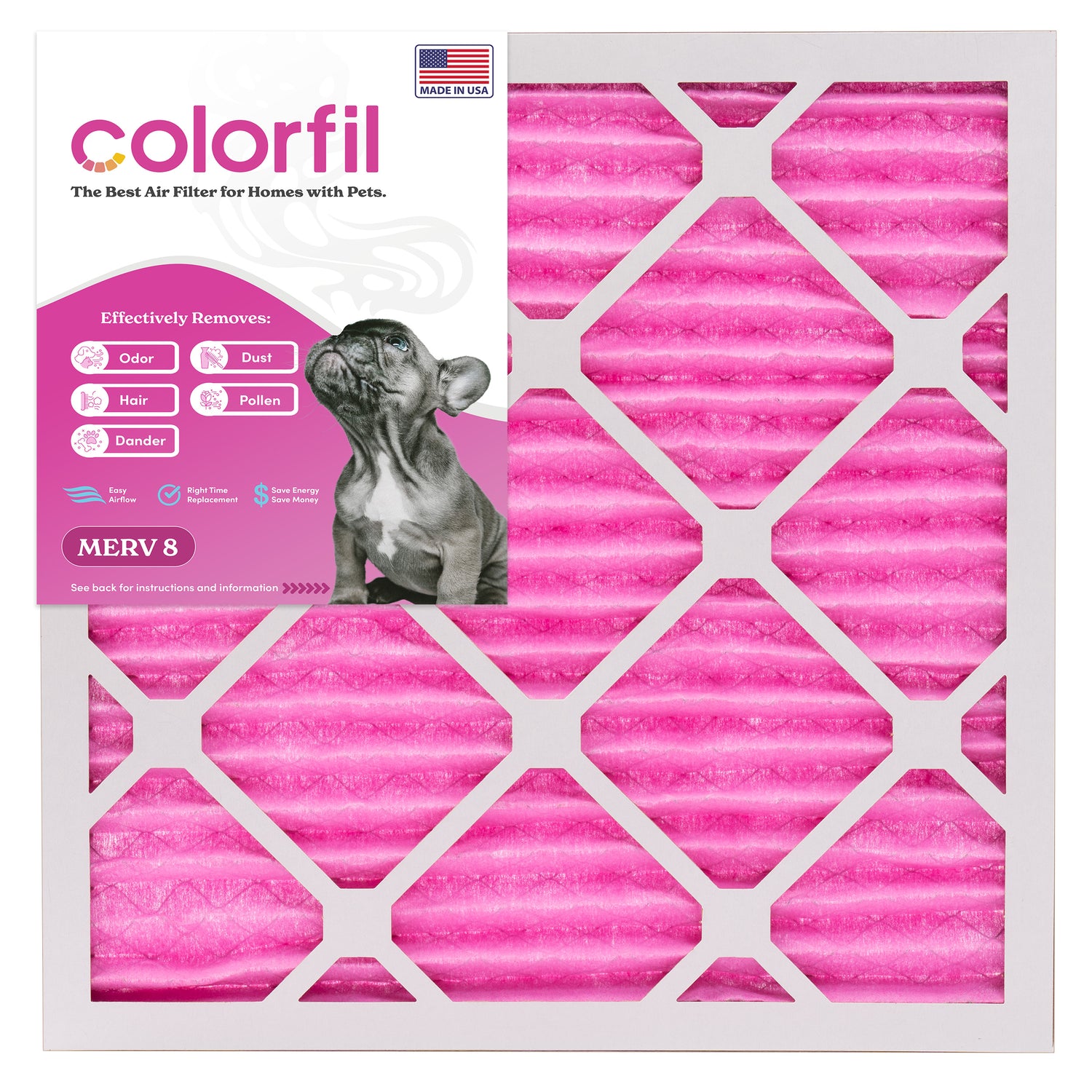Colorfil filters are unique in that they remove chemicals and odors, and also change from a vibrant pink (or purple) to yellow to let you know when they are nearing the end of their capacity. Our customers typically observe their filters change color in about 1 month to 4 months. So what does this mean? What impacts the color change?
We’ve found the following three factors have the greatest impact on your Colorfil filters’ lifetime. Follow along to learn why your filter is changing color so quickly or slowly and what you can learn from it to improve your air quality.
1. Indoor Air Quality

A slow color change (4+ months) is an indicator of excellent indoor air quality and very low amounts of chemicals and odors in your home. In some cases, especially in older homes, Colorfil filters may collect dust more quickly than they reach their chemical and odor absorption capacity. In this case, we suggest replacing your filter prior to Colorfil’s color change to ensure good airflow in your furnace and efficient dust removal throughout the home. Colorfil is still doing its job removing chemicals and odors no matter how dirty it might look.
A rapid color change (less than 1 month) is an indicator of relatively high levels of odor causing, amine-based gas molecules in your home—a sacrifice we pet owners lovingly make. Don’t let the fast color change scare you; it means that Colorfil is doing its job to keep your home fresh and your air clean! Subsequent filters should last you longer, as your indoor air quality improves over time. You can still keep your filter in after it has reached its odor absorption capacity if you’d like, as it will still function effectively as a regular particulate filter until it is full of dust. Just make sure to check it again in a month or two!
2. Season

Colorfil filters have a variable lifespan across the year due to varying HVAC usage levels, temperature changes, and humidity changes.
In the winter, low humidity and low temperatures decrease the amount of chemicals and odors circulating the air, slowing down the color change.
When testing our filters, we found that Colorfil filters can last 1-2 months over the summer and nearly 6 months over the winter before changing color in the same home. Although your filter may not have changed to its yellow color yet, it may be dark from dust, in which case we recommend a replacement a bit earlier to improve the airflow and air quality in your home. This way, Colorfil will always be removing small particles, chemicals, and odors in your home with high efficiency.
3. Air Circulation

When your thermostat fan is set to automatic, it only runs when heated or cooled air is needed to regulate the indoor temperature. When the temperature is moderate, such as in the spring and fall, your system’s heating and cooling cycles that activate the system fans will run less often, in turn reducing the amount of air that passes through your filter each day and the amount of fresh, filtered air in your home.
To get more out of your filter, we recommend changing your fan setting to on, at least for part of the day when the weather is mild. The more air that flows through your filter, the more air that will be cleaned in your home!
Take-Aways
Colorfil’s color change is an indicator of indoor air quality and of when your filter has reached its chemical and odor absorption capacity. We recommend you replace your filter either when it has turned yellow, or when it has filled up with dust—whichever comes first for you.
Use your first color change as a starting point for when to check your next filter. But keep in mind, your filter may last a longer or shorter amount of time depending on the season. Colorfil lets you know when to change it, so you don’t lose out on money replacing your air filter too early and you don’t lose out on clean air by replacing your air filter too late!


